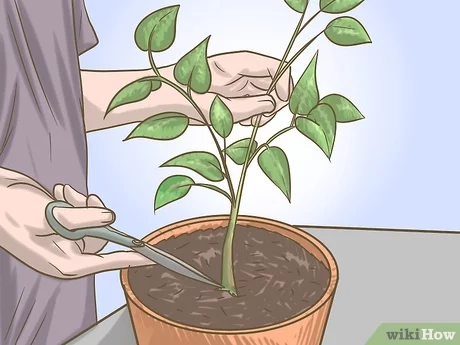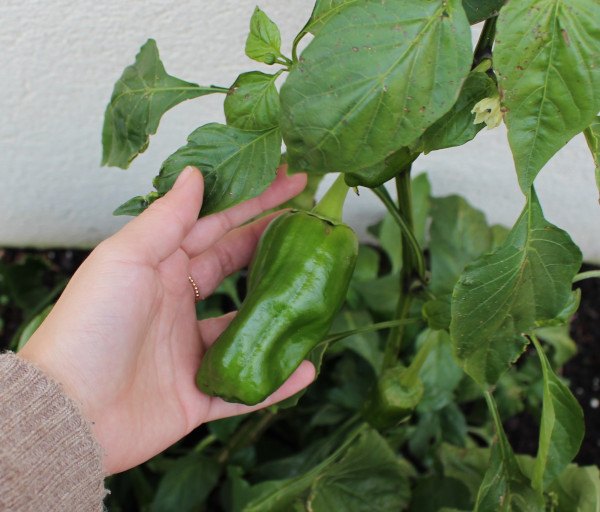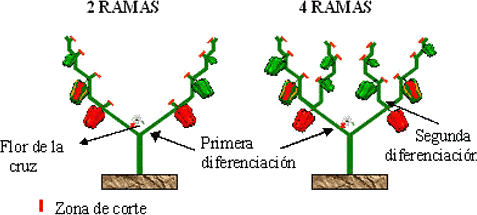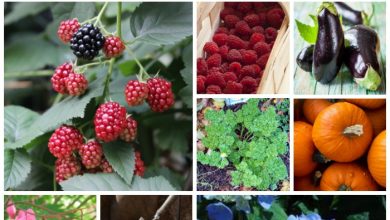How to Prune a Pepper Plant Step by Step: When to Prune

Hello to all agrohuerters! In today’s article we are going to learn how to prune a bell pepper plant. It is a practice that, normally, not many people do but it is very simple and will allow our plants to get enough resources to produce delicious peppers. On the other hand, we will see the difference between the different types of pruning (training, production and regeneration) and what advantages each one of them has. We will finish by explaining step by step how a good pruning should be carried out.

Types of pepper pruning
When it comes to pruning a pepper plant, three classes can be distinguished: formation pruning, production pruning and regeneration pruning.
formation pruning
Training pruning is mainly aimed at shaping the plant according to the number of arms (main branches) that it is desired to have. We must try to distribute the sap well so that all the vegetative organs receive it. In addition, it is intended to promote cultural work, harvesting and tutoring.
To carry out formation pruning, you must eliminate:
- main stem shoots
- Leaves of the main stem that touch the ground
- Irregularly growing or poorly formed suckers and stems.
Production pruning (or fruiting)
Production pruning is based on maintaining the shape of the plant, regulating production so that it is abundant and of good quality.
To do this, you must:
- fruit thinning
- leaf thinning
- sprouting of branches
regeneration pruning
Its objective is to make the plant sprout again when it is in decline after the last harvests. This operation entails an important elimination of vegetal mass. It is applied to aubergines and peppers to achieve new sprouting after the normal growing cycle.
Advantages of pruning peppers
As we have already seen in the article: « how to prune a tomato plant «, pruning vegetables brings with it multiple benefits. Among the most important advantages are:
- Increased vigor of the plant.
- It is tried to direct all the resources of the plant to the production of peppers.
- Increase the size of the peppers.
- Reduces the risk of pests and diseases.
- Light reaches the plant more easily.
- Improves aeration.
- It avoids the deformations of the fruits when they are trapped between the leaves.
When to prune a bell pepper
It is not necessary to prune every week. It is best to prune approximately 2 times a month. That often will be more than enough.
How to Prune a Pepper Plant
A pepper plant can be pruned mechanically (with disinfected scissors) or manually. It is essential not to prune when the plants are wet as we are at greater risk of introducing a disease. If we manage to carry out all these steps correctly, we are sure to have some good peppers for the vegetable stew!
1. Main branches
Without a doubt, the first decision we must make is to choose how many main branches we want our pepper plant to have. The normal thing is to leave 2, 3 or 4. In fact, there are studies (more focused on greenhouse production) that investigate which option is the most correct.
For example, they say that leaving 2 main branches improves the precocity of the plant (it develops earlier) and increases the quality a little. However, by leaving 3 or 4 main branches we get an increase in production.

Therefore, it is a decision that each one must make!
2. Training pruning
- Suppression of shoots on the trunk. It is recommended to remove all the sprouts that are born on the main stem of the plant up to the cross or first bifurcation (see previous photo). This will favor the growth and development of the fruit-bearing branches.
- Suppression of leaves on the trunk.Those leaves that are in the lower part of the plant touching the ground should be removed.
- Elimination of suckers.All the suckers that are born in the axillary part of the stem (as you will see later in a video) must be eliminated since they are unproductive stems.
3. Production pruning
- Thinning of leaves on the trunk and branches.When we see that the leaves on the main stem up to the first fork are very old, they should be removed. This thinning will be done regularly throughout the production period. If you see diseased leaves inside the plant, you also have to pull them out.
- Fruit thinning.It is very frequent that in the first bifurcation or cross a first bloom appears that gives rise to very large fruits. Sometimes these fruits are suppressed to prevent them from harming the development of the rest. It is also the decision of each one, to remove more or less fruit to favor the growth of others.
- Breakouts.It is done on plants with a lot of vigor and excessive vegetation to force the appearance of new flowers and advance maturation.
To finish fixing the ideas, I leave you a video where they explain to us in a very simple way how to prune a pepper plant.
Have a nice day!



![Photo of Diseases and Pests Attack Cassava: [Detect and Fight Them]](https://www.complete-gardening.com/wp-content/uploads/2022/08/diseases-and-pests-attack-cassava-detect-and-fight-them-390x220.jpg)
![Photo of Temperate Continental Climate: [Characteristics, Flora, Fauna and Adaptability]](https://www.complete-gardening.com/wp-content/uploads/2022/08/temperate-continental-climate-characteristics-flora-fauna-and-adaptability-390x220.jpg)